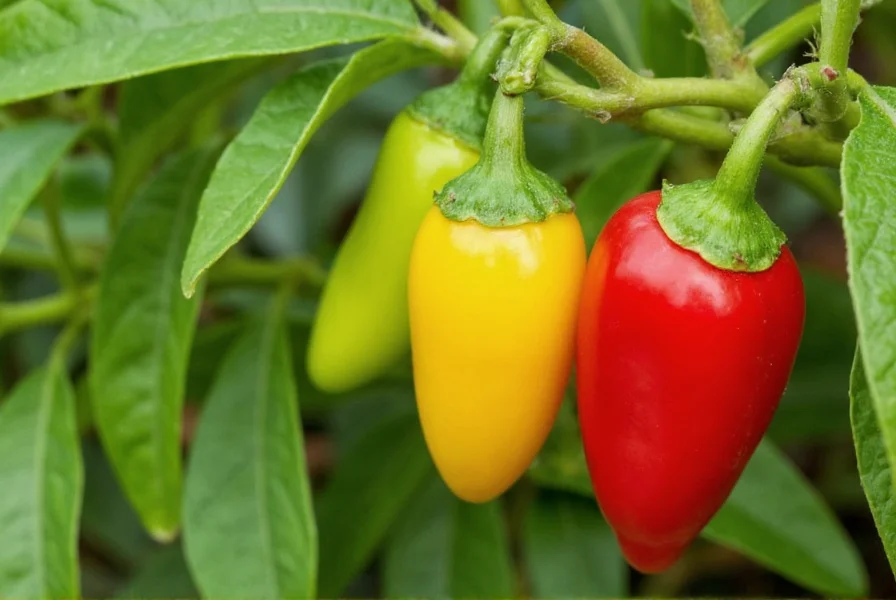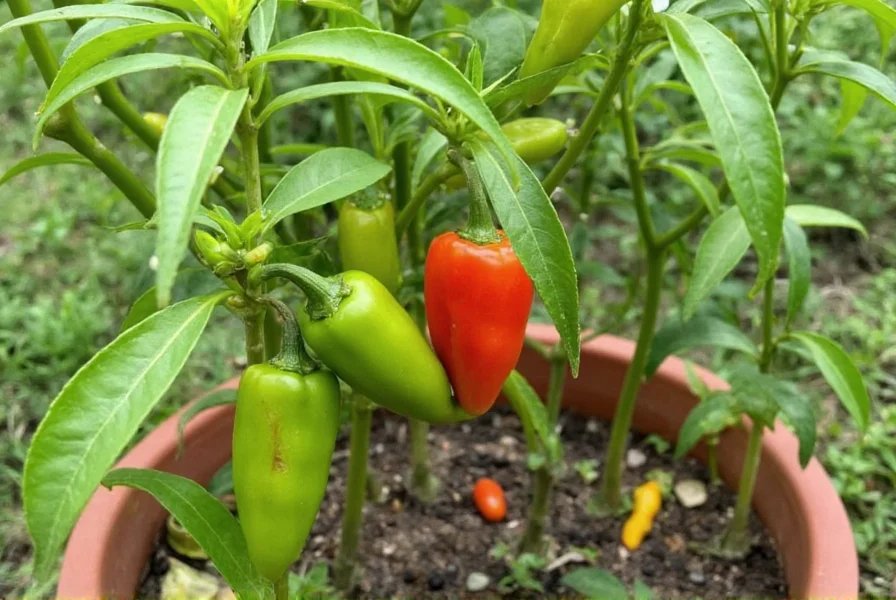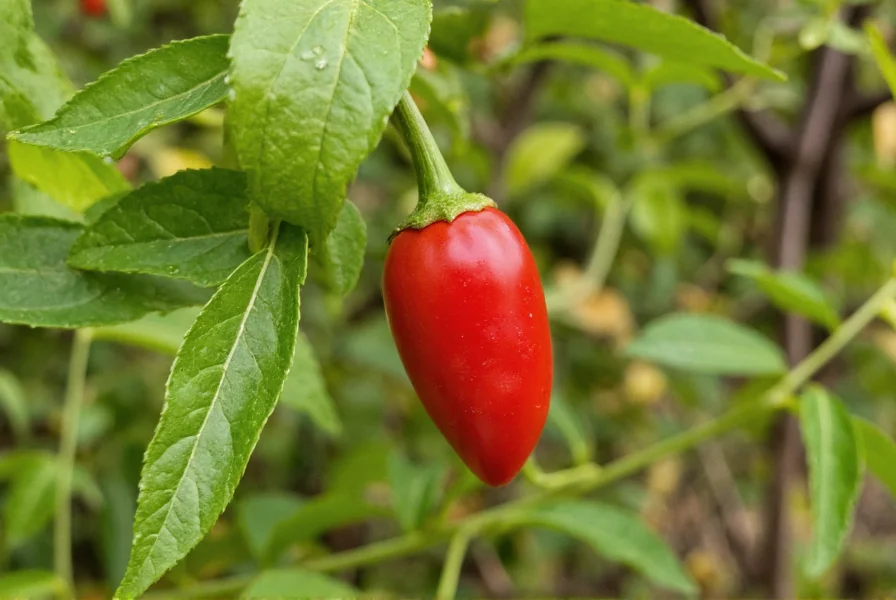Understanding the Wiri Pepper: A Culinary Treasure of the Guianas
When exploring the world of exotic chilies, the wiri pepper stands out as a distinctive regional specialty. This small but mighty pepper has been cultivated for generations in the rainforest regions of northeastern South America, particularly in Guyana where it's considered a cultural staple. Unlike commercially dominant peppers that have spread globally, wiri peppers remain relatively obscure outside their native region, making them a fascinating subject for chili enthusiasts seeking authentic regional flavors.
Origin and Historical Significance
The wiri pepper's history is deeply intertwined with the indigenous peoples of the Guiana Shield region. Archaeological evidence suggests chili cultivation in this area dates back thousands of years, with wiri peppers becoming particularly prominent in Arawak and Carib communities. European colonizers documented these small fiery peppers in the 17th century, noting their importance in local cuisine and traditional medicine.
What makes wiri peppers unique among Caribbean chili varieties is their specific adaptation to the humid tropical climate of the Guianas. Unlike many commercially cultivated peppers, wiri peppers are typically grown in small-scale backyard gardens rather than large plantations, preserving traditional growing methods that have changed little over centuries.
Physical Characteristics and Heat Profile
Wiri peppers are easily identifiable by their distinctive features:
- Size: Typically 1-1.5 inches long, about the size of a large berry
- Shape: Slightly elongated with irregular curves, unlike the perfectly tapered bird's eye chili
- Color progression: Starts bright green, transitions through yellow-orange, and matures to deep red
- Heat level: 30,000-50,000 Scoville Heat Units (SHU), placing it between serrano and habanero peppers
- Flavor profile: Intense heat with distinctive fruity, floral notes and earthy undertones
| Pepper Variety | Scoville Heat Units | Flavor Characteristics | Regional Association |
|---|---|---|---|
| Wiri Pepper | 30,000-50,000 | Fruity, floral, earthy | Guyana, Suriname |
| Bird's Eye Chili | 50,000-100,000 | Sharp, citrusy | Southeast Asia |
| Habanero | 100,000-350,000 | Tropical fruit, citrus | Mexico, Caribbean |
| Jalapeño | 2,500-8,000 | Grassy, bright | Mexico |
When comparing wiri pepper vs bird's eye chili, several key differences emerge. While both are small and extremely hot, wiri peppers have thinner walls and a more complex flavor profile with distinctive floral notes. Bird's eye chilies tend to have a sharper, more immediate heat with citrus undertones, while wiri peppers deliver heat that builds gradually with more nuanced flavor dimensions.

Culinary Applications of Wiri Pepper
In Guyanese and Surinamese cuisine, wiri peppers serve as the essential heat component in numerous traditional dishes. Unlike many hot peppers used primarily for their heat, wiri peppers are valued for their complete flavor profile that enhances rather than overwhelms dishes.
The most famous application is in pepperpot, Guyana's national dish—a complex meat stew that simmers for days with cassareep (cassava root extract) and multiple spices. Wiri peppers provide the characteristic heat that balances the dish's sweetness. They're also essential in:
- Pepper sauce: Fresh wiri peppers blended with vinegar form the base of traditional hot sauces
- Chow mein: Guyanese-style stir-fried noodles featuring wiri peppers for heat
- Fish dishes: Particularly with salted fish preparations common in the region
- Chutneys: Combined with mango, tamarind, or other fruits for condiments
When working with fresh wiri peppers, experienced cooks recommend wearing gloves due to their intense capsaicin content. The thin walls make them easy to incorporate into dishes without creating textural distractions—a significant advantage over thicker-walled hot peppers when seeking pure heat and flavor without additional texture.
Growing Wiri Pepper Plants
For gardeners interested in cultivating authentic wiri peppers, understanding their specific growing requirements is essential. These peppers thrive in conditions that mimic their native tropical environment:
- Climate: Require consistent warmth (75-90°F) and high humidity
- Soil: Well-draining, slightly acidic soil rich in organic matter
- Sun exposure: Full sun (6-8 hours daily)
- Watering: Regular but not excessive—allow top inch of soil to dry between waterings
- Maturation: 70-90 days from transplanting to first harvest
One challenge for growers outside tropical regions is that wiri pepper plants are particularly sensitive to temperature fluctuations. Unlike more adaptable varieties like jalapeños, wiri peppers may stop fruiting if temperatures drop below 65°F or rise above 95°F. Gardeners in temperate climates often achieve best results growing wiri peppers in containers that can be moved indoors during temperature extremes.

Where to Find Wiri Pepper and Suitable Substitutes
Finding authentic wiri peppers outside the Guianas presents significant challenges. While specialty markets in areas with large Guyanese or Surinamese communities (like New York, Toronto, or Amsterdam) may carry fresh or frozen wiri peppers, availability remains limited. Online retailers occasionally offer dried wiri peppers or seeds, though quality can vary considerably.
For those unable to source genuine wiri peppers, several substitutes can approximate their flavor and heat profile:
- Scotch bonnet peppers: Similar fruitiness but significantly hotter (use half the amount)
- Thai bird's eye chilies: Comparable size but sharper heat (use with caution)
- Habanero peppers: Similar flavor profile but much hotter (use sparingly)
- Malagueta peppers: Closest substitute with similar heat and flavor characteristics
When substituting, remember that wiri pepper heat level is distinctive—hotter than serranos but milder than most habaneros. The unique floral notes are difficult to replicate exactly, so adjustments to recipes may be necessary when using substitutes.
Nutritional Profile and Safety Considerations
Like other chili peppers, wiri peppers contain capsaicin—the compound responsible for their heat—which has been studied for potential health benefits including pain relief and metabolism support. They're also rich in vitamin C (more than oranges by weight) and contain vitamins A, B6, and K.
However, their extreme heat requires careful handling. When preparing wiri peppers:
- Always wear gloves to prevent skin irritation
- Avoid touching your face, especially eyes
- Wash hands thoroughly with soap after handling
- Start with small amounts when cooking—heat builds gradually
Individuals with sensitive digestive systems should consume wiri peppers in moderation. The intense capsaicin can cause discomfort for those unaccustomed to extremely hot peppers.
Frequently Asked Questions
What is the difference between wiri pepper and bird's eye chili?
Wiri peppers and bird's eye chilies differ in several key aspects. Wiri peppers originate from Guyana and Suriname, while bird's eye chilies come from Southeast Asia. Wiri peppers measure 30,000-50,000 Scoville units compared to bird's eye's 50,000-100,000 units. Wiri peppers have thinner walls, a more floral flavor profile, and irregular shape compared to the consistently tapered bird's eye chili. They also differ in culinary applications, with wiri peppers being essential in Guyanese pepperpot while bird's eye chilies feature prominently in Thai and Vietnamese cuisine.
How hot are wiri peppers compared to other common chili varieties?
Wiri peppers measure between 30,000-50,000 Scoville Heat Units (SHU), placing them significantly hotter than jalapeños (2,500-8,000 SHU) and serranos (10,000-23,000 SHU), but milder than habaneros (100,000-350,000 SHU). They're approximately 2-6 times hotter than serranos but only about half as hot as most habaneros. This heat level makes them versatile for adding substantial heat without overwhelming a dish, with the heat building gradually rather than hitting immediately like some other hot peppers.
Where can I buy authentic wiri peppers outside of Guyana?
Authentic wiri peppers are challenging to find outside their native region. Your best options include specialty markets in cities with significant Guyanese or Surinamese communities (such as New York, Toronto, or Amsterdam). Some Caribbean grocery stores may carry them fresh, frozen, or in prepared sauces. Online retailers occasionally offer dried wiri peppers or seeds, though quality and authenticity can vary. When purchasing online, look for sellers specializing in Guyanese products and check reviews carefully. Many people ultimately resort to using close substitutes like malagueta peppers when genuine wiri peppers aren't available.
Can I grow wiri peppers in a temperate climate?
Yes, you can grow wiri peppers in temperate climates with proper care. They require warm temperatures (75-90°F), high humidity, and full sun. Gardeners in cooler regions typically grow them in containers that can be moved indoors during temperature extremes. Start seeds indoors 8-10 weeks before the last frost date, using a heat mat to maintain soil temperature around 80°F. Wiri peppers are particularly sensitive to cold—fruiting may stop if temperatures drop below 65°F or rise above 95°F. In temperate zones, they usually produce best in greenhouses or as container plants brought indoors during unfavorable weather.
What are the best culinary uses for wiri pepper?
Wiri peppers excel in applications where their distinctive flavor can shine without being overwhelmed. They're essential in Guyanese pepperpot (the national dish), where they provide balanced heat that complements the cassareep base. Their thin walls make them ideal for hot sauces, as they blend smoothly without textural interference. They work well in chutneys, particularly with tropical fruits like mango. In Guyanese-Chinese cuisine, they're crucial for authentic chow mein. Due to their gradual heat build-up, they're excellent for dishes requiring extended cooking times. When using wiri peppers, remember that a little goes a long way—their heat intensifies as they cook, so start with small amounts and adjust to taste.











 浙公网安备
33010002000092号
浙公网安备
33010002000092号 浙B2-20120091-4
浙B2-20120091-4